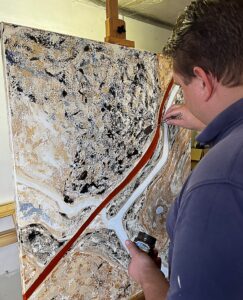Tracing Charlie’s Footsteps: An Artist’s Journey to Reclaim Family History
West Australian contemporary artist Rohin Kickett's groundbreaking exhibition "Charlie's Footsteps" maps the spiritual and physical terrain of his great-grandfather's displacement through richly textured aerial landscapes. Kickett transforms the rugged outback topography into powerful meditations on family, survival, and cultural resilience.
His layered works trace his ancestor's extraordinary journey from removal under the 1905 Act to becoming a celebrated local cricket star - offering a rare insight into one of Australia's most complex historical periods through a deeply personal lens.
Personal Connection
Can you start by telling me about Charlie - who was he in your family's story?
His name was Charlie Sandstone, and he's my great-grandfather. He was taken around 1909, and he passed away in 1988 when I was only two. My Dad and my Nana only met him in 1979. They didn't really know who he was or that he even existed. They finally found that out in 1979. They reached out, and they managed to have about nine years of a relationship with him before he passed away.
Charlie was taken from his family when he was five or six years old and sent to New Norcia, a monastery and mission. He was placed into another mission called Mogumber. In his late teens, he was moved to Wyalkatchem, a little country town, and that's where he stayed right up until he was put in a home because he was too old to look after himself.
The records place him at Magamba when my Nana was born. He didn't know that he actually had a daughter; they'd moved him before she was born.
What are your earliest memories of hearing about your great-grandfather?
It was about cricket. I was absolutely cricket-mad growing up. Both my brother and me. It was quite unusual because the rest of my family loved football. Football is the main sport that Aboriginal people love. Cricket, not so much. Cricket is a sport of higher socioeconomic status. My brother and I loved it. We were really good at it. My Dad used to talk a little about his grandfather and how good he was. He told me that there was a book at the WACA (Western Australian Cricket Association) Museum with some information on him.
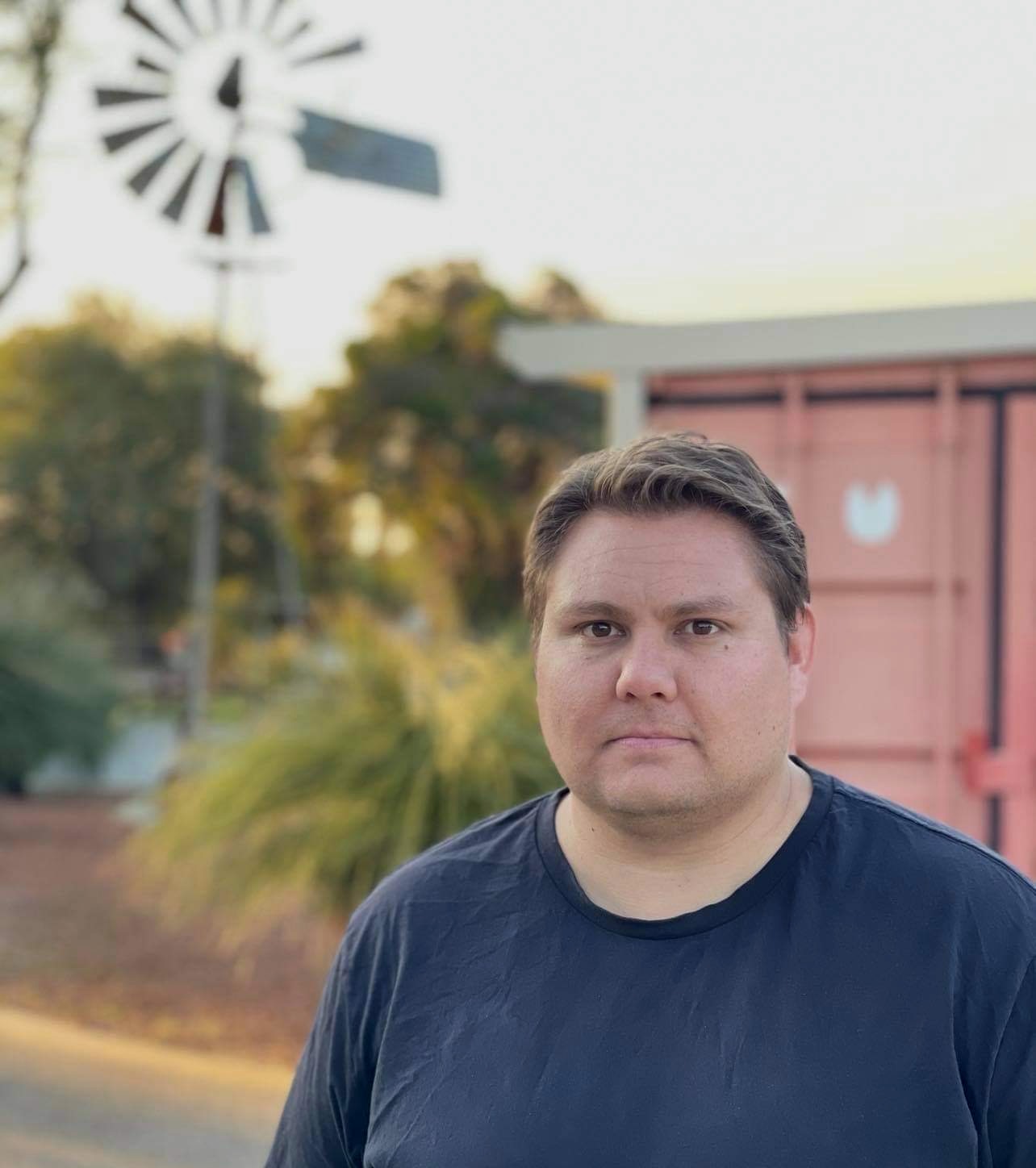
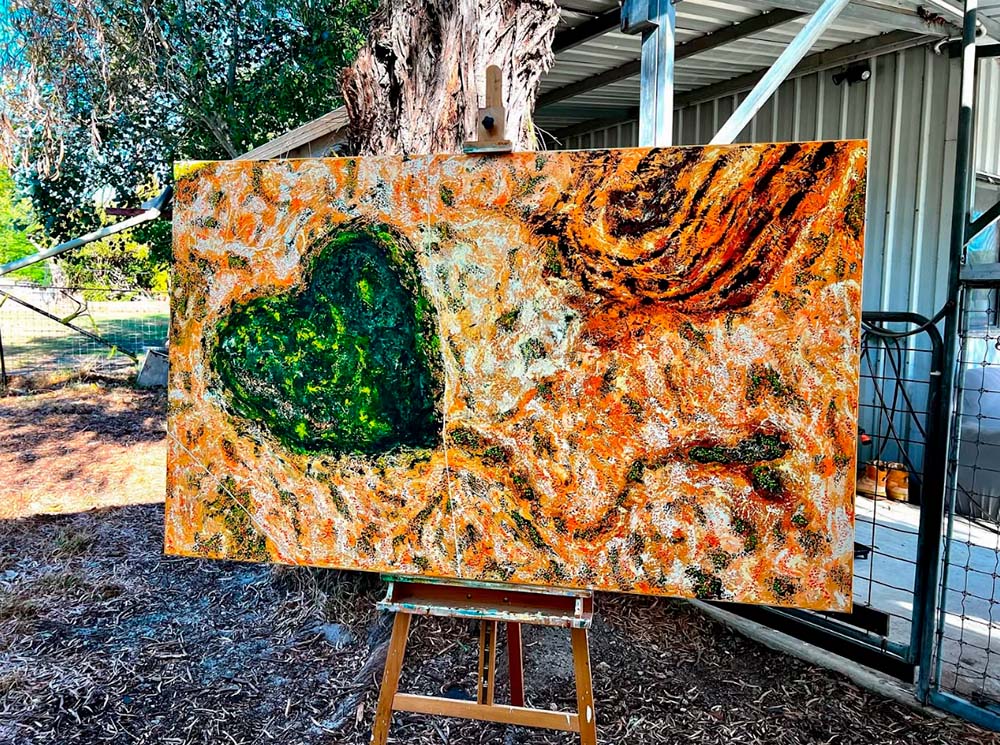
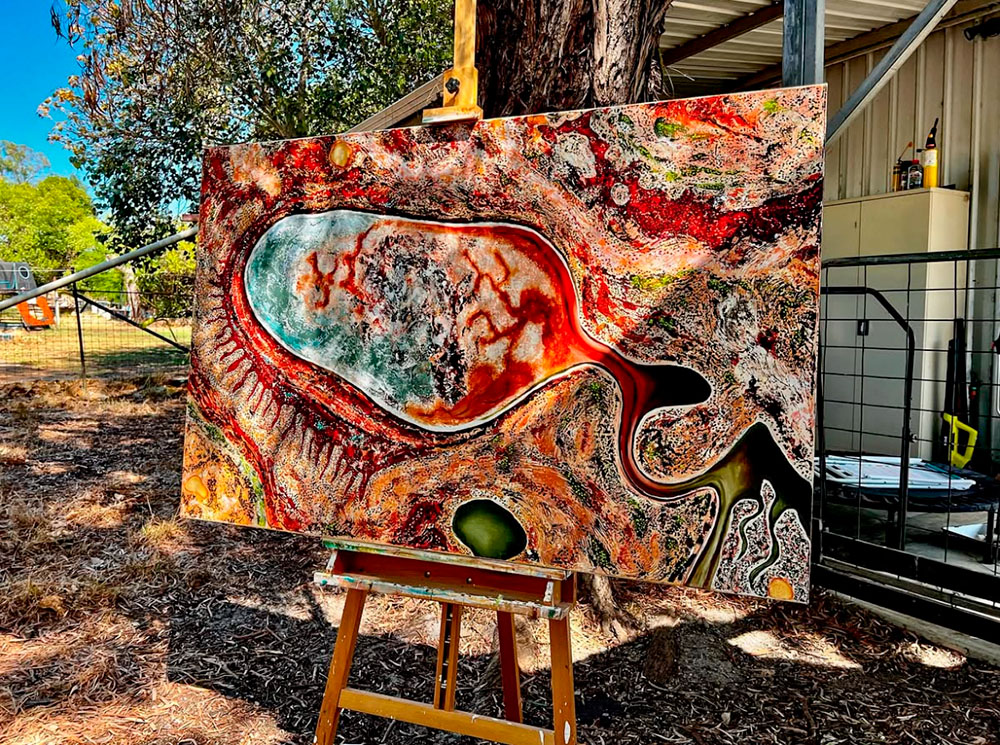
When I was about 23, I drove through the city after work. I was working as a concreter at the time. I thought, I'm just going to stop in at the museum. There was a book called Country Cricket, A Hundred Years of Country Cricket in WA. I pulled that book out, and I went to the back index to see if Charlie Sandstone's name was there. It had multiple references to him.
I found an article about him written in the Country Cricket Characters section. He was the number one feature in that category of the book. That's when I discovered my grandfather's batting average was 81. When I found that, I was like, wow, this is incredible! It opened up much about myself.
Can you explain what was happening when your grandfather was young?
The 1905 Act was the policy that gave the authorities the ability to remove the Aboriginal children and place them in missions with the intent of turning them into white people. They wanted to raise them up, get rid of their culture and their language, and turn them into white citizens.
Could you walk me through what you know about the events leading up to Charlie being taken?
He got his last name because he was born in Sandstone, so that's why he's Charlie Sandstone. My uncles and aunties told me he was taken from Mount Magnet, and then his journey was in the book that I read from New Norcia, Magamba and Wyalkatchem.
There are stories about when he was taken. He had a sister as well. When they saw the authorities coming, they used to paint the kids up in boot polish to make them darker because they would leave the darker kids and take the lighter kids. The story is that they had time to get the boot polish on his sister but not him. That's why he was taken, and eventually, his Mum and his sister were moved to Leonora.
We don't really know what he went through at those missions, but the kids at New Norcia were abused, and all sorts of things were happening to them. I remember visiting Magamba, and they had some sort of jail cells that were for kids. I felt quite sick walking into these cells. There's a children's graveyard with about 580 children buried at the mission as well.
Were there any surprising discoveries during your research?
I discovered examples of the respect people felt toward Charlie. He still had to sign the declaration that he was no longer Aboriginal. He was no longer allowed to talk to his family or Aboriginal people generally. He had to comply with this to be able to live in town and work for the butcher. Despite his agreement, he still had to get permits to travel into town and back.
When he was playing for Wyalkatchem, he went to travel to Perth for the Country Cricket week, but the authorities in the town said, "No, no, you are still having contact with family, so we're not going to give you the permit so you can't play". The town over at Dowerin knew how good he was, and they said, "Well, if you come to play for us, we'll give you the permit".
When that cricket team went to the Perth Raffles Hotel for lunch in the 1930s, they refused to serve Charlie. The whole team got up and walked out with him. He would've had to have been an outstanding person to have the privilege of playing cricket at that time.
Artistic Process
How did you begin translating this journey into visual art?
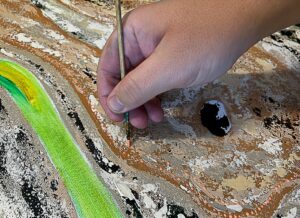 I was originally doing photography. I would print the photos and then paint some of the stories on top of them. The first piece I did was to take a photo of the Raffles Hotel and paint some of the stories associated with that time. On the photo of the Raffles Hotel, I painted all the walking trails and landmarks in Wyalkatchem that I've discovered that were named after my great-grandfather. I thought it was quite fitting to put that on top of a location where he had been refused service.
I was originally doing photography. I would print the photos and then paint some of the stories on top of them. The first piece I did was to take a photo of the Raffles Hotel and paint some of the stories associated with that time. On the photo of the Raffles Hotel, I painted all the walking trails and landmarks in Wyalkatchem that I've discovered that were named after my great-grandfather. I thought it was quite fitting to put that on top of a location where he had been refused service.
He's left quite a legacy in that town, where the school faction is called Sandstone, the pavilion in the oval is called Sandstone Pavilion, and a walking trail in the wildflower season is named Sandstone after him.
Could you describe some of the specific techniques or symbols you've used?
It's all basically aerial representations of the country. I wanted to capture the texture of my great-grandfather's country. I used palette knives and a lot of thick paint to create that texture and multiple layers. One thing I've found is that there are not a lot of smooth surfaces up there. It's all very, very rough.
I've got about eight pieces done, and I'm probably going to have about 14 or 15 all up. I've been tackling the big works first. This exhibition is just the early stages of this possibly ten-year project. I'll spend a lot of time in each location Charlie lived and probably take my Dad up so he can reconnect with the land and his family links to the place. It should be a really good trip.
How did the works differ from your previous exhibitions?
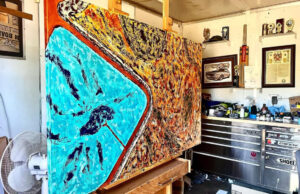 I am painting a landscape with a completely different texture, colour palette, and saturation of colour. The sun is a lot different up that way, and the reflections off the earth and the colour tones are all so different, too.
I am painting a landscape with a completely different texture, colour palette, and saturation of colour. The sun is a lot different up that way, and the reflections off the earth and the colour tones are all so different, too.
Cultural Significance
How does Charlie's story connect to the broader history of Aboriginal displacement?
I think it's a great story about someone making the most of a bad situation. He grew up with nothing. Everything was taken from him, his culture, his language, his identity, and to be able to do something rewarding like playing cricket at that level and having the relationships within the team, the camaraderie, and the respect, I think, just shows the character of who he was as a person.
After the cricket, he ended up having a contract for the bin runs in the town, so he would run down the streets and he'd collect all the bins and take all the rubbish out. He knew everyone in the town. They'd all say, "Morning Charlie". He'd tip his little hat and say, "Morning".
He reconnected with his sister as well in the 1980s, after seventy years of not seeing each other.
What impact do you hope this exhibition will have on younger generations?
I think this exhibition reflects the resilience and strength of Aboriginal people. I've experienced a lot of discrimination and racism in my life, and my Mum helped push me through it. It's about how you take that and turn it into something good and strong to keep yourself moving forward.
A lot of people could say no, it's just too hard, and give up. I think this story shows that if you're resilient enough, you can do what you want to do as an Aboriginal person. For my grandfather to be able to do what he did in that time period is, to me, incredible.
What would you want Charlie to know about how his story is being honoured?
I don't think he'd ever had imagined that people would be still talking about him 30 years later. In the Wyalkatchem Museum, they've got a full trophy cabinet with all of his records and trophies still there. We can still see him in the museum. His story is still alive and will get even stronger as people learn more about this remarkable West Australian, my great-grandfather, Charlie Sandstone.
View
Rohin Kickett - Charlie’s Footsteps, Mt Magnet 2025
Rohin Kickett - Beautiful Dead 2022
Read
Rohin Kickett - Artist Interview 2022
Rohin Kickett - Exhibition Walk Through 2022
The Rise and Rise of Noongar Art
Appreciating Aboriginal Culture vs Appropriation
The Ethics of Collaborative Relationships Around Aboriginal Art

